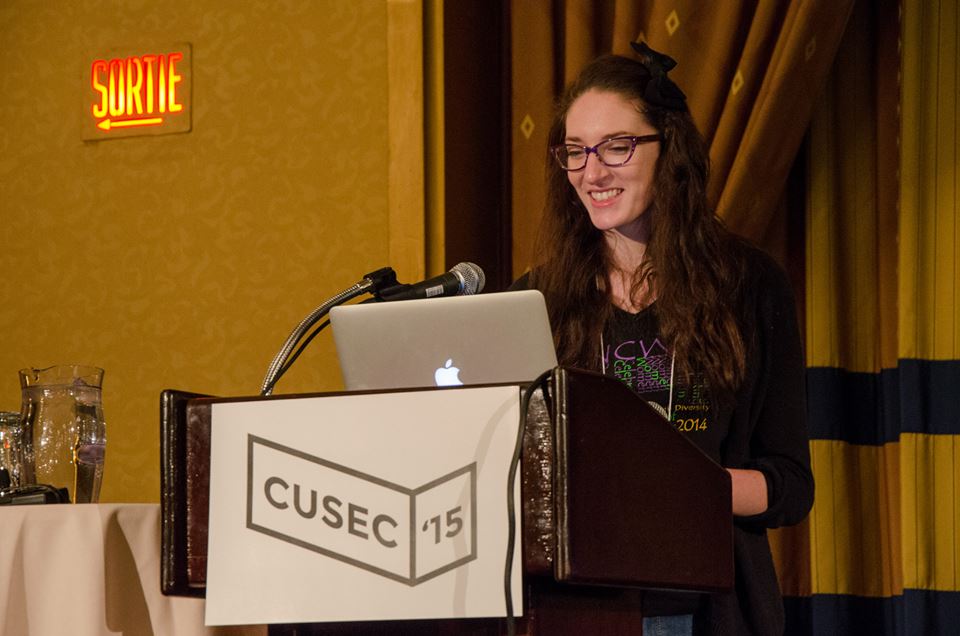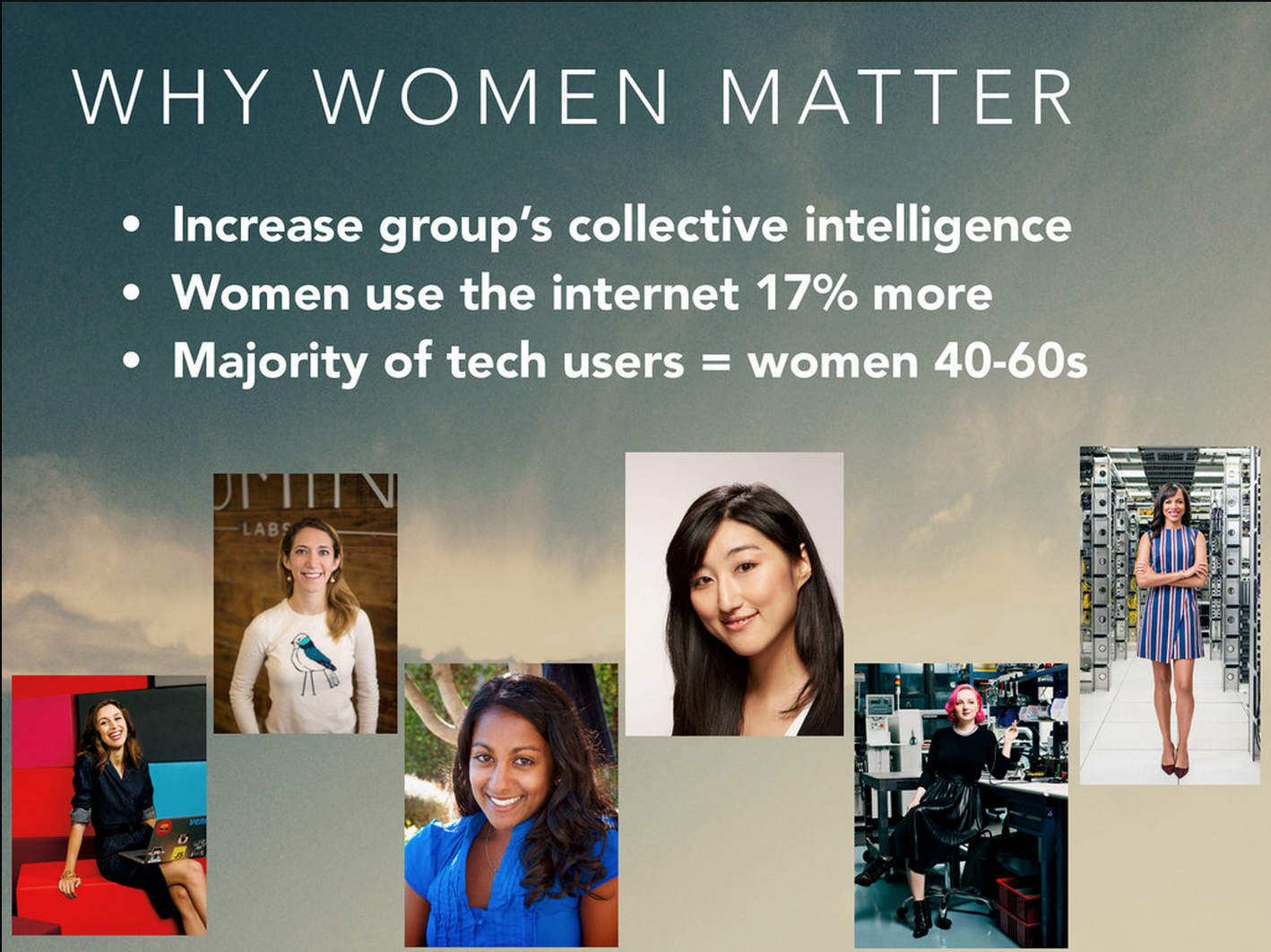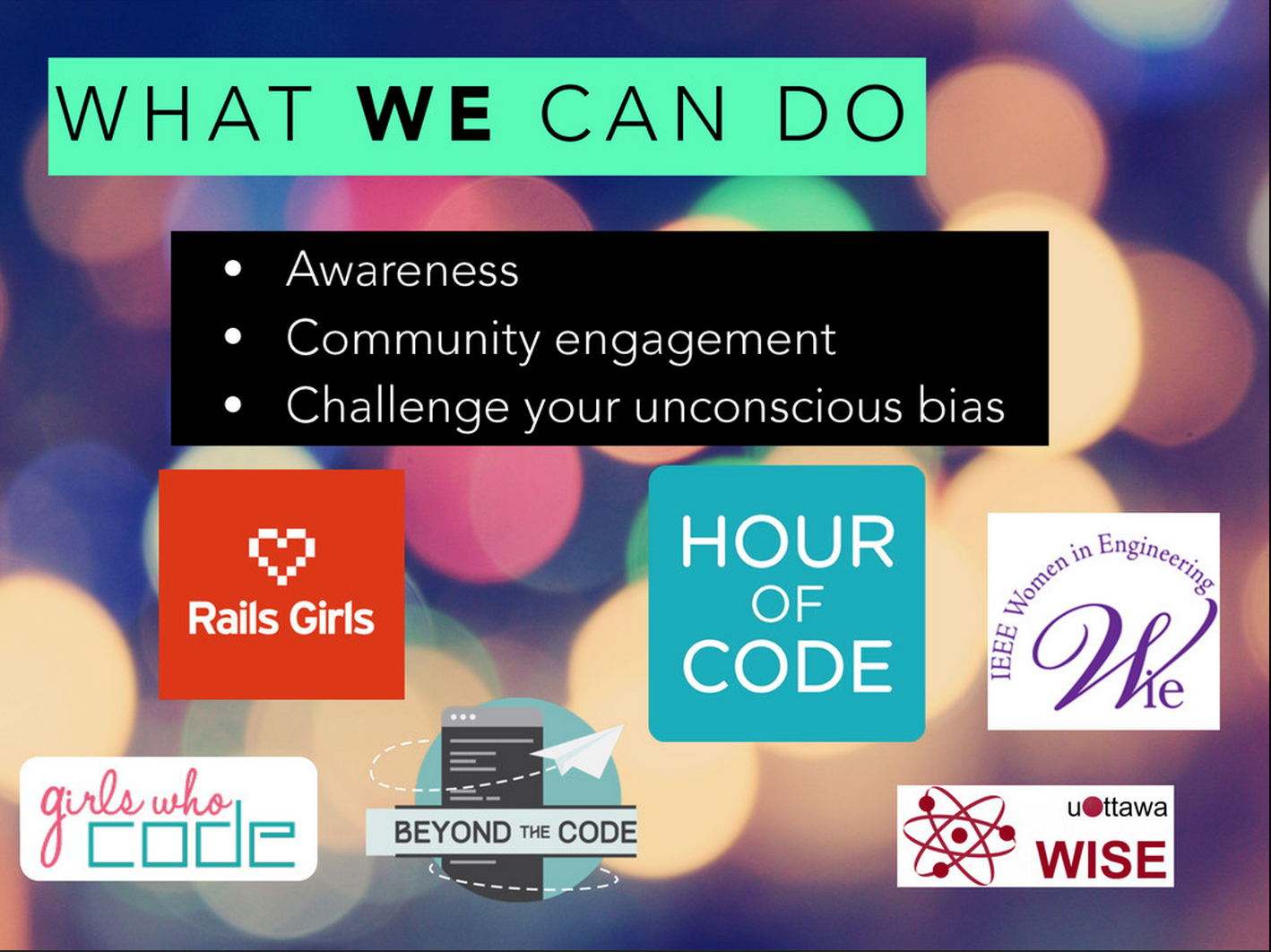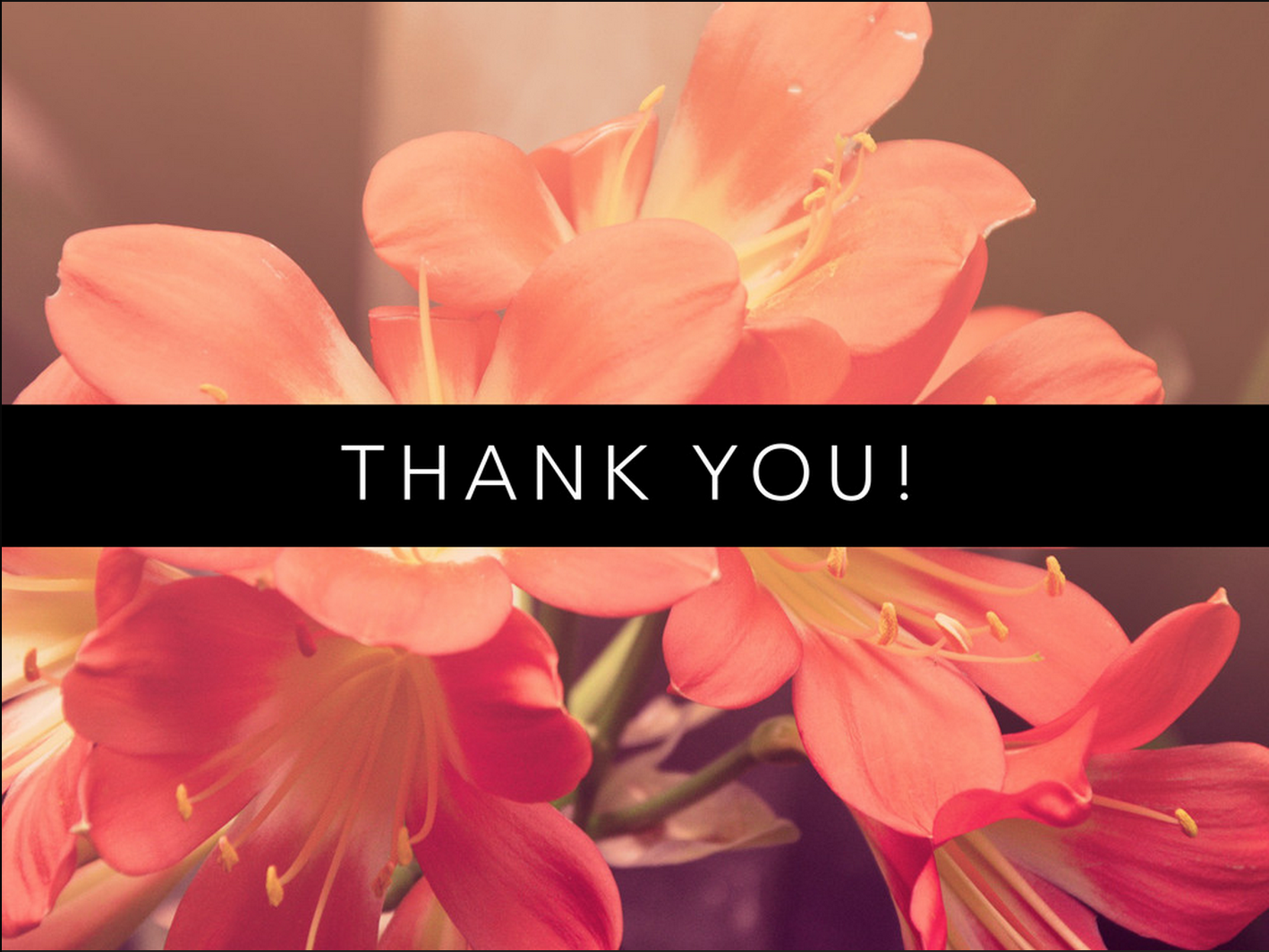Women in Tech
April 3rd, 2015 - A write-up and explanation for my talk 'Women in Tech' (slides)
* Work in progress, references to be added soon! *
Some Background Info
I attended CUSEC in both 2014 and 2015, which is the (amazing) Canadian University Software Engineering Conference. For CUSEC 2015 a new feature of "Lightning Talks" had been added, where student attendees were allowed to apply to do a 5 minute talk about a tech related topic. Several of my friends were on the organizing committee and two of them were in charge of organizing the talks for the first time as well as the annual "Demo Camp" competition.
In order to practice the logistics for the event they organized a mock Demo Camp and Lightning Talks competition between the University of Ottawa and Carleton University in November. I was planning to attend the event, but it was when a friend suggested I do a talk on women in technology that I thought about actually competing.
The topic has always been something very personal for me, since I am a female in the field of technology, yet I struggled on what aspect to focus on. Speaking for five minutes is no where near enough time to cover a topic that has spurred numerous articles, efforts and arguments. After some thought I decided to put an emphasis on the current state of the tech industry and why women are important and valuable members of it. I also wanted to focus on findings from studies and statistics. If I was going to be speaking to those in the tech industry I would appeal to the majority of people's logic loving nature.

Setting up at the competition practice run

Speaking at CUSEC 2015
I'll confess that I wrote the presentation the day of while forgoing my other responsibilies (mainly working on a research project for my masters class in Bioinformatics, whoops), but I was quite pleased with how it turned out. I read articles and studies in a frenzy, combined my points with background images (thanks Unsplash ) and did two practice runs right before I went to the event. The competition itself went smoothly, I didn't win, but I received lots of positive feedback.
January brought the time for the real presentation. As the time to talk in front of the gathering crowd neared I felt more and more nervous. I was obsessively looking at my slides, readjusting colours and the precise positioning of text boxes. Public speaking does not bother me, but the potential judgement about the topic was enough to push me out of my comfort zone. Nerves and not wanting to run over the time limit had me speak a bit too quickly, but I did it!! I spoke in front of roughly 150 people (I am actually just guessing) and it was one of the most nerve wracking things I have ever done. I was worried about a backlash of comments like "haven't we heard enough about this?" and braced myself. All I received was kind and constructive feedbacks and comments. I am so thankful to those who helped me, encouraged me and supported me with my talk. Since CUSEC I've presented the talk twice, at the Rails Girls uOttawa (first ever Canadian!) event and at the uOttawa Spring Open House. I have had a great time presenting it, and I hope my following write-up about the slides is equally as informative.
The Slides: Explained
I included in quotations approximately what I say when presenting, it changes slightly each time as I don't read off of anything or have my points written out, followed by some additional commentary in italics

Women in Tech
"Hi, I'm Vanessa MacIsaac and I am going to speak about women in tech"
I wanted to go with a minimalistic title slide, and I chose a pink as the font colour because that's my favourite colour :)

The Dawn of Time
"All right, so let's go back in time to the 1840's, considered the dawn of Computer Science. A woman by the name of Ada Lovelace, pictured here in this lovely painting, worked with the mathematician Charles Babbage who had thought up the idea of a machine called the 'Analytical Engine'. Ada came up with instructions for the machine to calculate a sequence of Bernoulli numbers, but since the machine was never actually built her algorithm could not be tested. Due to this algorithm for number calculation she is widely considered to be the first computer programmer."
I thought it would be a good starting point to speak about Ada Lovelace and show from this inspirational time how things have progressed.

The Current Situation
"And now we come back to the present, and this is the current situation. 26% of the computing workforce in the USA are female. Below we can see in these pie charts the break down for several prominent tech companies: Apple, Facebook, Google, Twitter, Yahoo!, Cisco and Intel [from this article]. While I was making this presentation I was going to add a label for each chart to show which part is for females and which for males. However, I realized I could just say: For every single one of these charts the larger share of the pie represents the number of male employees, while the much smaller part repsresents the number of female employees. Additionally, this is data for all employees at the company, not just in the engineering and technical departments where we usually find an even lower percentage of female employees"

The Decline of Women in Tech
"Here we can see a decline of the percentage of females pursuing a degree in Computer Science. This is taken from American statistics where in the mid-1980s 37% of CS majors were female, so not too bad. Then we move to 2012 where only 18% of CS majors are female, a large drop in numbers [source]. At the University of Ottawa, where I go to school, we have similar numbers of less than 20% females in CS"
Sorry to my Sofware Engineering friends, but it was hard to find Canadian stats and Soft Eng doesn't exist as a major in the States.

Even More to Think About...
"More to consider is the case of venture capitalism. A study was done where several business plans were created and slides were filmed with voiceover. For some of the videos a male narrator was used and for others a female narrator was used, so there were videos with the same plan but a different narrator. The videos were then shown to venture capitalists and they picked which one they would invest in. For the videos with the same business plan overwhelmingly the male voiced over video was chosen. 68% of the time the male videos were picked, while the female videos were picked 32% of the time. Again, this is the exact same business plan, just with a change of narrator. This demonstrates the phenomenom of 'unconscious bias'"

The Stereotype Threat
"Another study was done that examines the effect of stereotype threats. In this study the stereotype of 'women are not as good at math as men are' was examined. The threat was examined by looking at the effects of minimizing the threat and alternatively reinforcing it. The study distributed math tests to high school students. First, they attempted to eliminate the threat by telling the students that there is no difference between the resulst for girls and boys, they both do well on the test. As we can see here on the left of the chart there is almost no difference between the performance of boys and girls. Then, the researchers distribute another math test, of approximately the same difficult, but instead told the students that there is a big difference in how boys and girls perform. They were told boys do much better than girls on the test. As we can see here the words had a noticeable effect. The boys (the black bar) actually did slightly better when told girls were not as good, and the girls' performance suffered, we can see there is a large drop for the right dotted bar."

Why Women Matter!
"So we've discussed unconscious bias and the stereotype threat, but why do we even need women in tech? Well, a study was done that showed women increase a group's collective intelligence. In the study groups of men were given IQ tests to complete as a group. When women were added to the group and additional IQ tests done the group's score on the test rose. Adding women to the group was shown to increase the group's collective intelligence. In industry and research people attempt to solve many different, so it makes sense to have a diverse group of people approaching these problems in different ways in order to solve them."
"Additionally, women use the internet 17% more than men, and the demographic that uses tech the most is women in their 40-60s. If you are designing a product that you want to appeal to a large majority of people don't you want people from the largest demographics represented on your time? This way they can influence and guide the solutions in order to appeal to more people. Rather than just research your user, you should have them on your team."
Usually I don't have time to go through the bios of these awesome ladies pictured on the slide. I took the photos from Glamour's '35 Women Under 35 Who Are Changing the Tech Industry' article and chose to highlight a few of them. Pictured from left to right are:

What We Can Do
"There are a few things we can do to start changing the current reality. Firstly, awareness is key. In order to get more females interested in technology they need to know that it's a viable career option. I started off in Sciences in university, and it was only after first year when my sister's boyfriend, who was completing his Masters in Software Engineering, told me about his courses and work that I realized I could do that too. When I was applying to university I was encourage by many people to pursue Sciences, but I wish someone had suggested to me to think about degress related to technology."
"Also, community engagement is an important element. There exist many clubs, events and meetups that support and encourage females in tech. There exist international initiatives, like Google's 'Girls Who Code', Code.org's 'Hour of Code' (encouraging everyone to code!); and local initiatives like the 'Beyond the Code' conference held in Ottawa with an all female speaker line-up. At the University of Ottawa we hosted the first ever Canadian Rails Girls workshop, and we have clubs like WIE (Women in Engineering) and Women in Science and Engineering (WISE). I encourage you to volunteer or participate in these sort of initiatives."
"Lastly, I encourage you all to challenge your unconscious bias. I've been told numerous times that I 'don't look like I'm in Computer Science', and comments like this can be discouraging and hurtful. Your words have an effect on others. So before you say something, think about the implications, and think about how it will make others feels. This self examination is crucial to the support of women in tech, and extends to all manners of our lives. Words are powerful."

THANK YOU
"Thank you for listening!"
Thank you for reading!
Written by: Vanessa MacIsaac. Last updated: 19-04-2015.